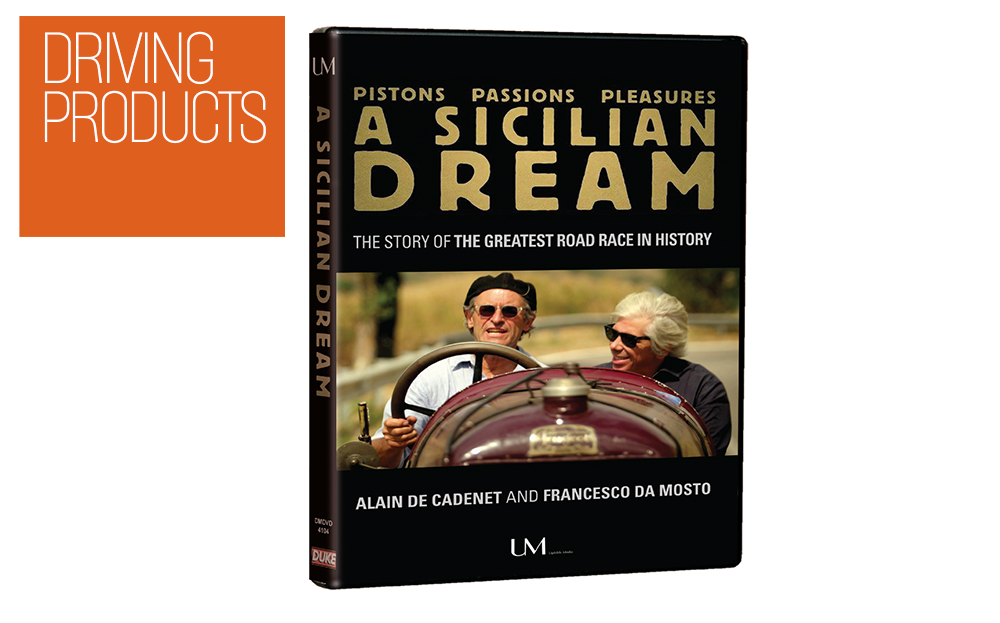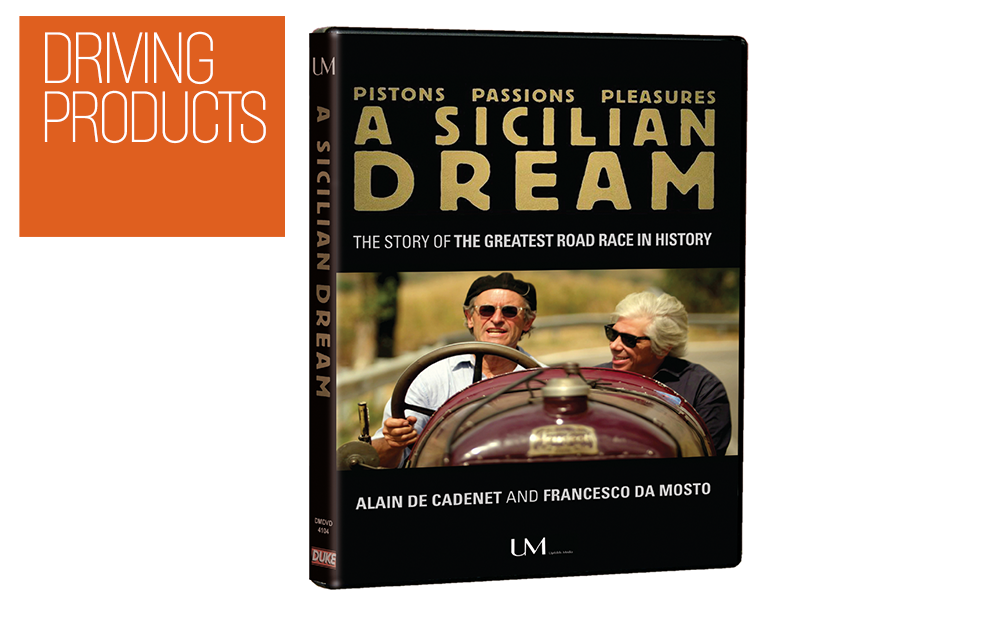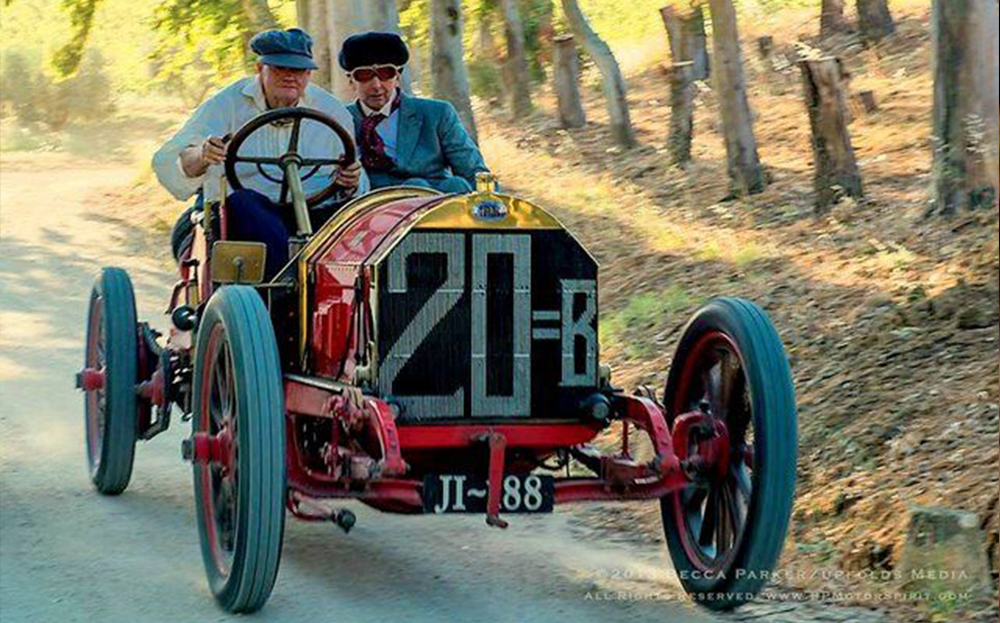Products: A Sicilian Dream - the story of the Targa Florio book review
How one man's dream turns into a journey of discovery

- Rating: ★★★☆☆
- Price: DVD £16.99; Blu-ray £19.99
- Buy at: Amazon
A SICILIAN DREAM is a tribute to the Targa Florio, the world’s oldest sports car race held on the mountain roads of Sicily. It was founded in 1906 by Vicenzo Florio, the younger son of a Sicilian industrialist, and ran every year, interrupted only by the Second World War, until 1977.
Our guide throughout the hour-long film is Francesco da Mosto whose dream of ‘pistons, passions and pleasures’ (to quote the film’s subtitle) we are invited to share. You may recognise the Italian architect, film-maker and television presenter from his three Italian travelogues and the series, Shakespeare in Italy, all broadcast in recent years on BBC Two.
Click to read car REVIEWS or search NEW or USED cars for sale on driving.co.uk
He’s joined by British racing car driver and TV presenter Alain de Cadenet for whom the Targa Florio is not so much a romantic dream as a terrifying memory. In 1971, he was nearly killed when, during a race, a wheel flew off his Lola prototype racing car and struck him on the head, knocking him out. In the ensuing crash, his car burst into flames. Fortunately, just in time, a spectator dragged him from the inferno. During the film, de Cadenet visits the spot where he nearly met his untimely death, and meets the son of the man who pulled him from the wreckage.
Perhaps it’s the story of this incident that makes da Mosto such an anxious passenger as he joins de Cadenet for a lap of the Targa Florio.
“Is it safe?” he enquires nervously as he climbs aboard de Cadenet’s Peugeot racing car, a pre-First World War racer typical of the Targa’s early years.
Over the ensuing 60 minutes we see more cars like the Peugeot, including de Cadenet’s own Targa-winning Alfa Romeo, which both men tour the island in. Meanwhile, da Mosto teases out reminiscences and anecdotes from a succession of fascinating witnesses to the glory years of the Targa Florio. Vicenzo Florio is clearly revered on the island, his race helping to put Sicily on the map. One year, after a particularly savage rainstorm, he even persuaded Mussolini to fund a new road through the island to ensure the Targa Florio’s survival.
As the youngest son of the Florio family, a merchant dynasty, Vicenzo had the time and the money to indulge his passions, chief among them being fast cars. It was he who brought motor racing to Sicily and, claims da Mosto, to the world. The Targa Florio was founded long before the Mille Miglia and the 24 hours of Le Mans. It even pre-dated England’s famous Brooklands racing circuit – by one year.
Different versions of the Targa Florio were created during its lifetime. The original 148km (92 miles) Targa Florio road race circuit featured 1500 hairpin bends and, typically, required 1800 gearchanges. According to de Cadenet, it offered “more corners, more braking and more gearchanges than any other road race, and a very high top speed on the final straight, too.”
Among the many anecdotes we’re treated to during the course of the film is one concerning Enzo Ferrari. In 1922 he was due to drive the Targa Florio with Baroness Maria Antonietta d’Avanzo, a teammate who was at the wheel of another car. The day before the race, the wily Ferrari swapped his car’s defective carburettor for hers. When she discovered his treachery she arranged for him to be held prisoner in a lift for 10 hours on the day of the race. Thereafter, Ferrari always used the stairs.
Today, the only cars driving the historic roads of the Targa Florio are either taking locals on their business or tourists seeking out the four museums along its length
Such was the Targa Florio’s importance to car manufacturers and drivers that they would risk everything to win. In the film, da Mosto tells how, in 1930, the rivalry between Alfa Romeo and Bugatti reached such a point that during that year’s race, Achille Varzi, who was driving an Alfa Romeo and who had just overtaken the Bugatti of Louis Chiron, ordered his mechanic to fill the car’s petrol tank while he continued to drive. Inevitably, some of the fuel splashed onto the car’s hot exhaust and a fire broke out. Undeterred, Varzi raced on to take the chequered flag.
By the 1960s and 1970s the Targa Florio was attracting crowds of almost one million, none of them paying anything to see the race. The cars were now much faster but the road they raced along was as bad as ever, and spectators continued to spill onto it to watch the cars at close quarters.
One of the best clips in the whole film is a cockpit shot of Porsche driver Brian Redman driving the course in the 1970s. He powers through sleepy villages, scattering pedestrians and oblivious, even, to horses. However, as we’re told: that’s how it was. In that same decade, a succession of serious accidents, too many of them fatal, prompted the closure of the Targa Florio, by this time described by one driver as a “totally insane” race.
Today, the only cars driving the historic roads of the Targa Florio are either taking locals on their business, or tourists seeking out the four museums that flourish along its length.
Unfortunately, much of the excitement and drama of the Targa Florio is filtered through da Mosto’s ‘dreamy’ approach to the story. He clearly feels a kinship with Vicenzo Florio, suspecting, so the promotional blurb tells us, ‘that they are both dreamers with a quirky sense of adventure’. The problem is, racing is anything but a dream; rather, it’s a deeply intense business that scenes with da Mosto staring pensively at nothing in particular and, in another, lying on his back blowing smoke rings, do little to illuminate.
Indeed, his genuine concern at joining de Cadenet in his old Peugeot racer is an unfortunate moment that has you pondering his suitability for the job. At intervals he even questions the driver’s sanity in risking his life racing – but surely, that was the whole point of the Targa Florio, and what drew the crowds in their thousands for over 70 years.
Sicily is a film-maker’s dream; the light and the countryside are ravishing, and da Mosto makes the most of them. Unfortunately, they lead to his film becoming a bit of a tourist brochure for the island. More insights from de Cadenet on driving the Targa, or from the British enthusiasts featured in the film coaxing their period racing cars around its tortuous corners, would have been welcome.
In the end, A Sicilian Dream is an evocative film but one that over-romanticises the race at the expense of gritty detail. Its line-up of great characters and witnesses to the races are lost in the luscious photography and da Mosto’s dreamy prose – but he has at least shone a light on a once great race, and produced a film that can be enjoyed by racing enthusiasts and dreamers alike.







